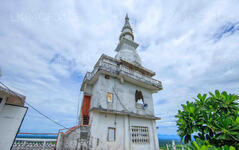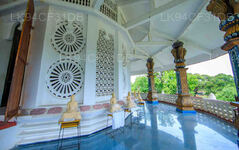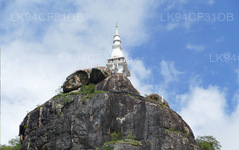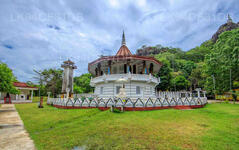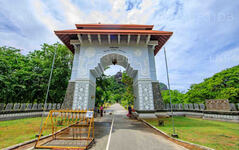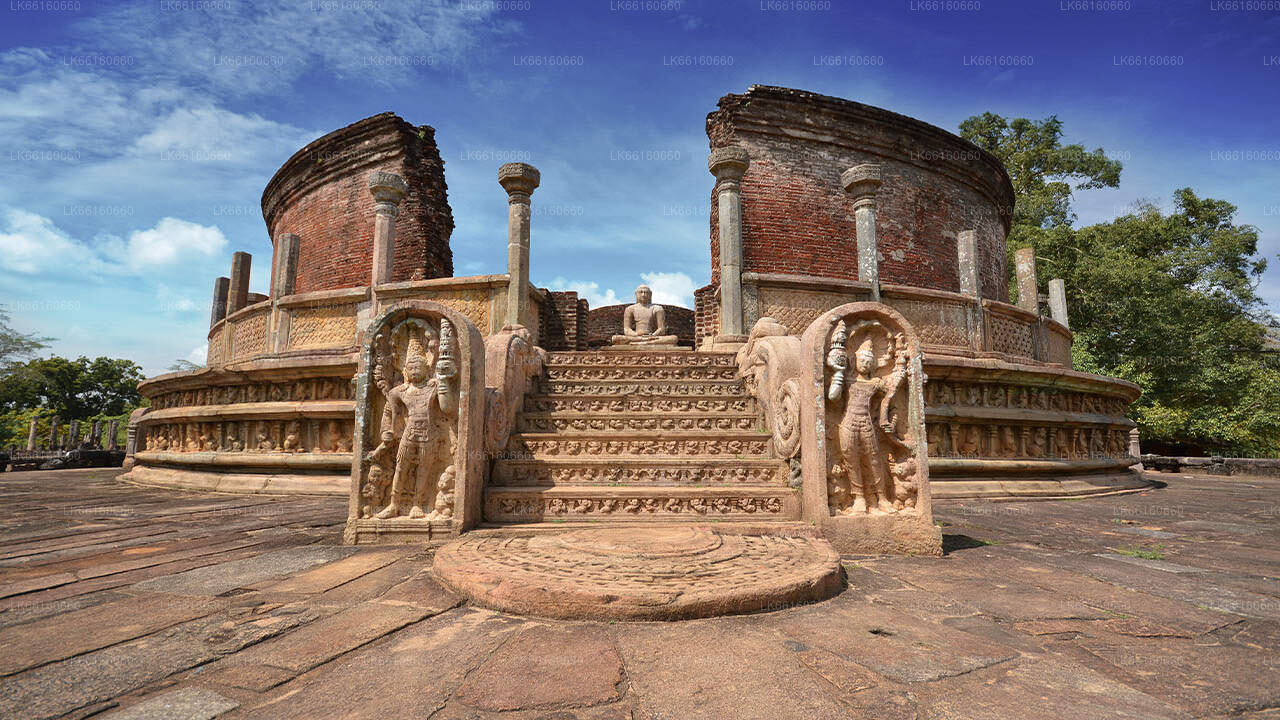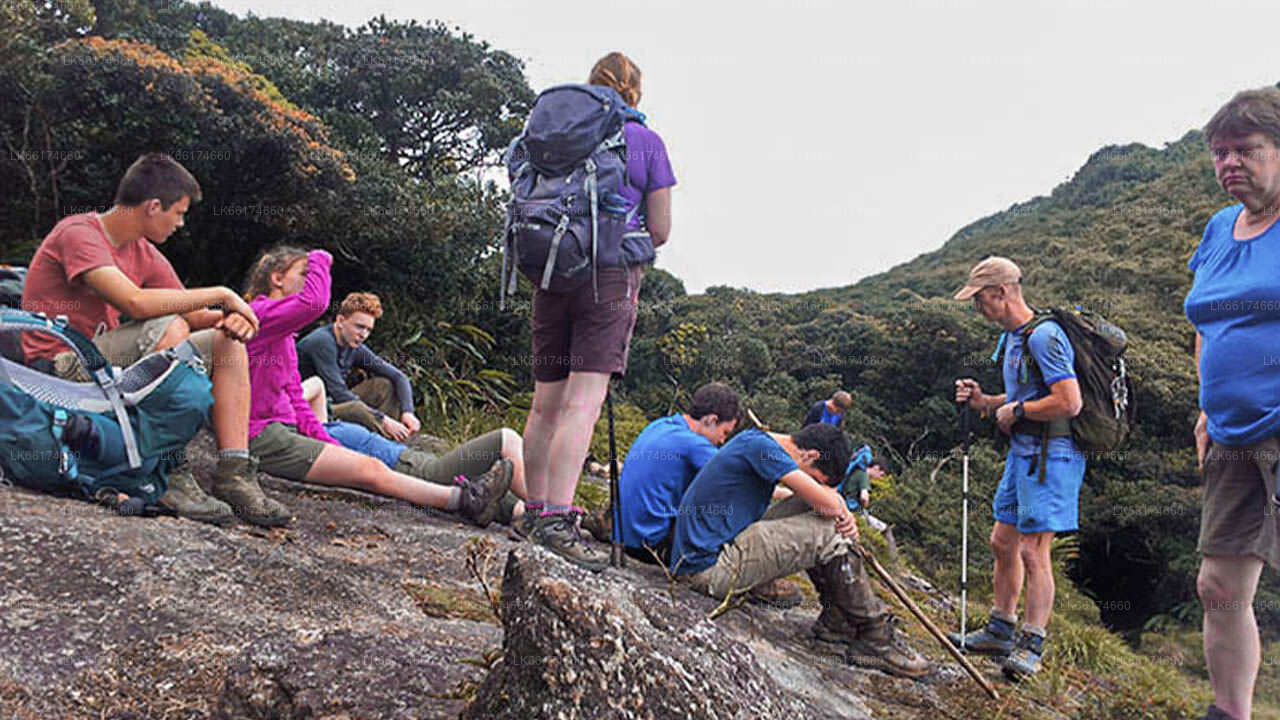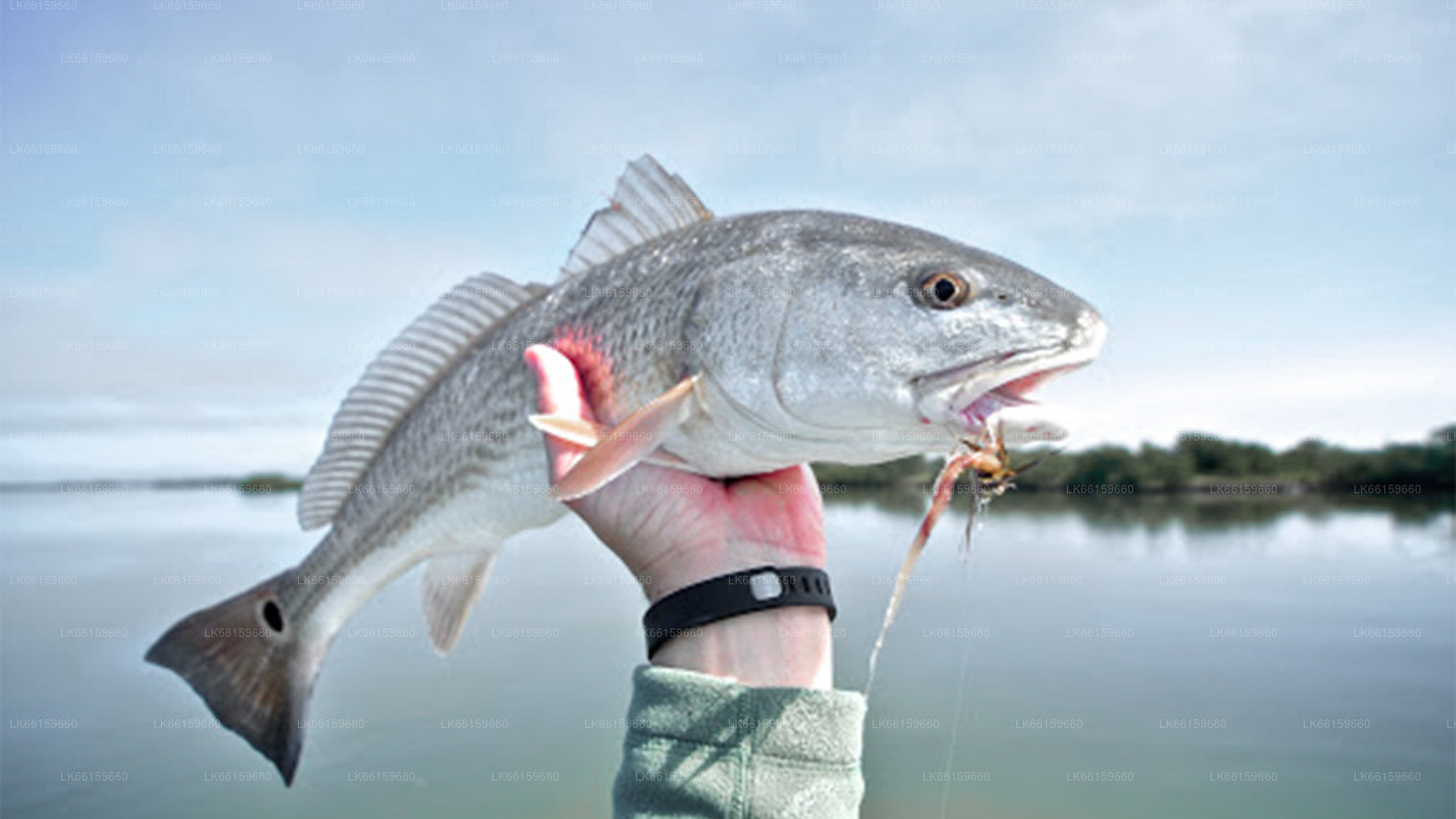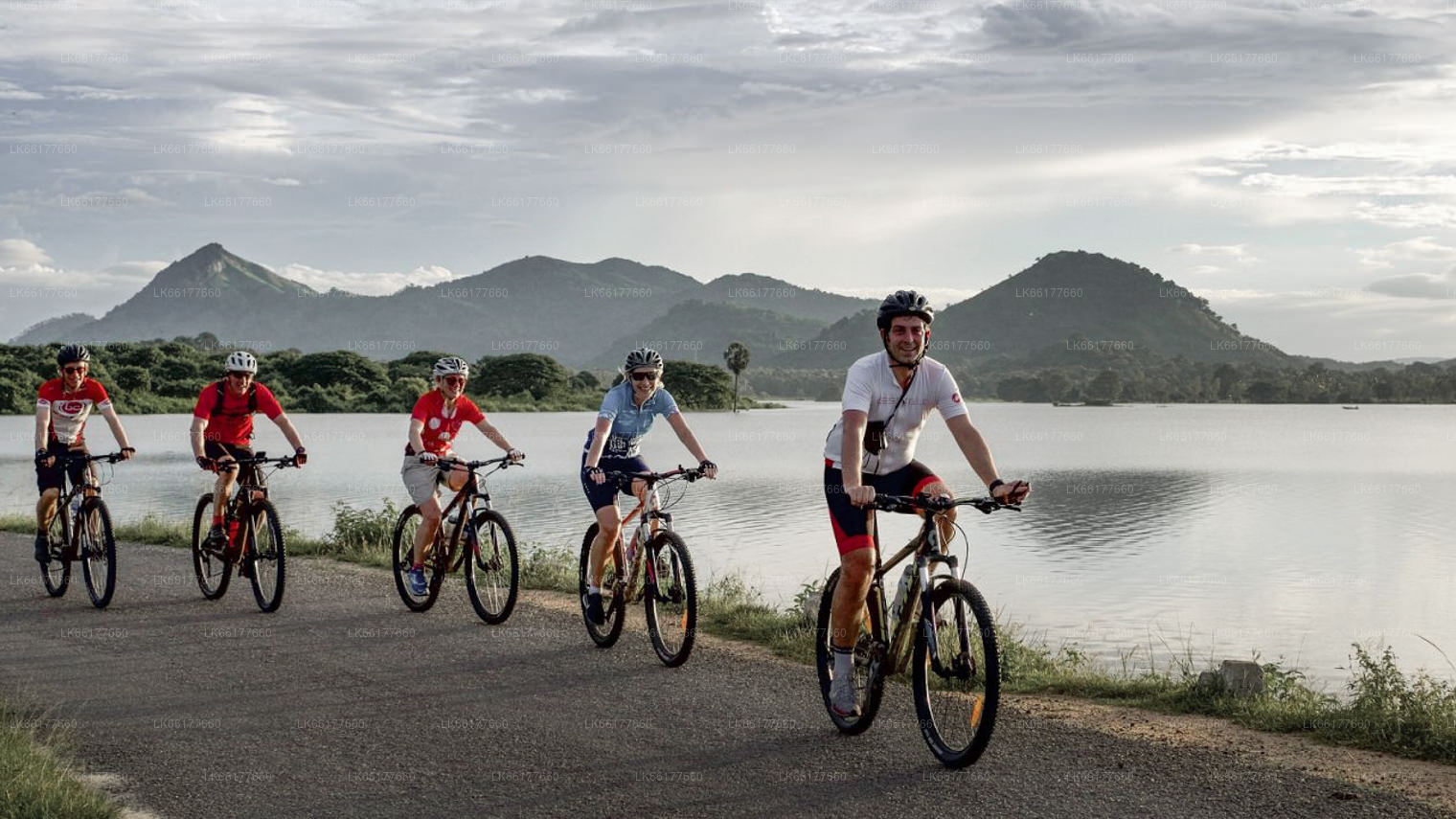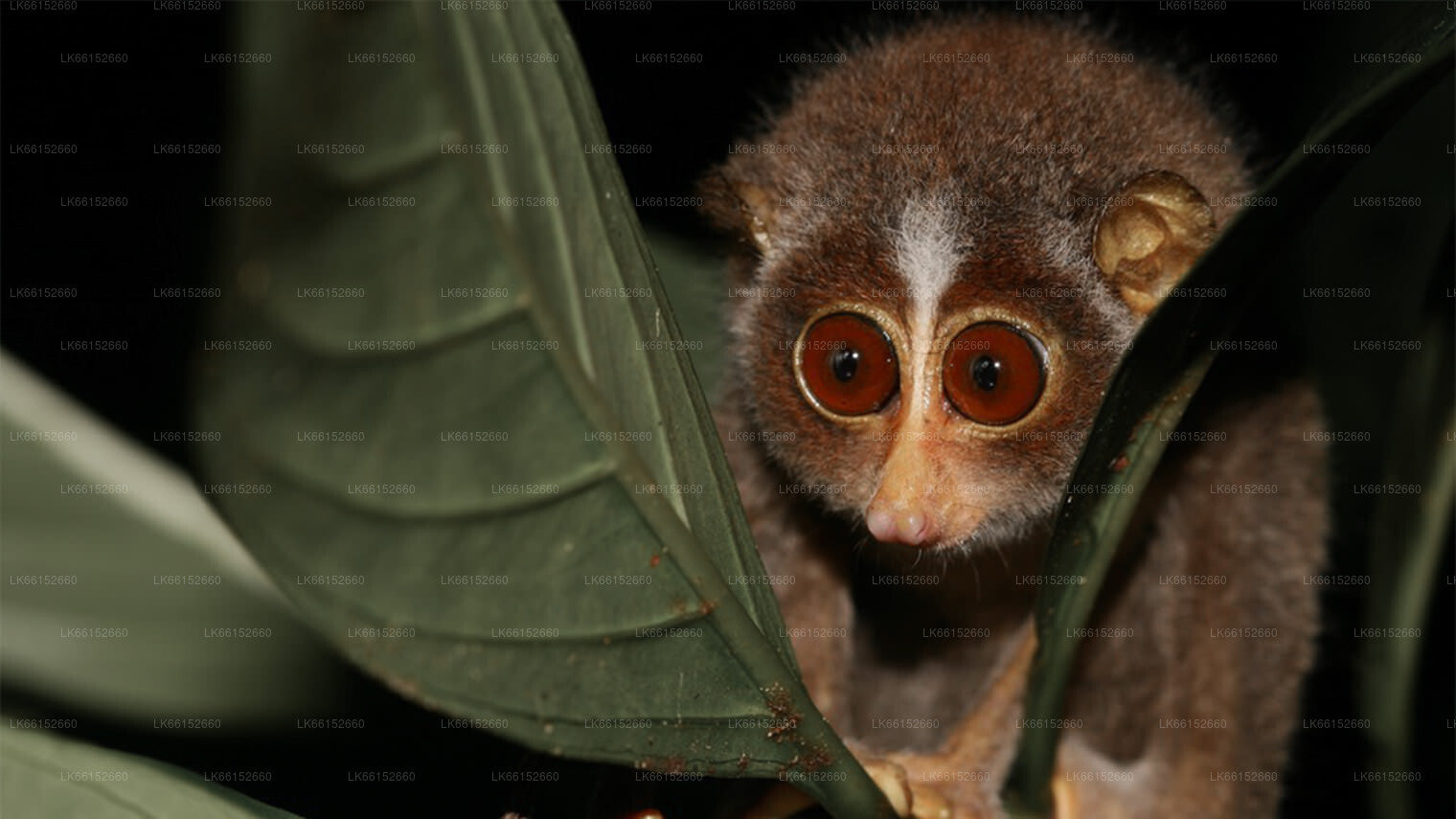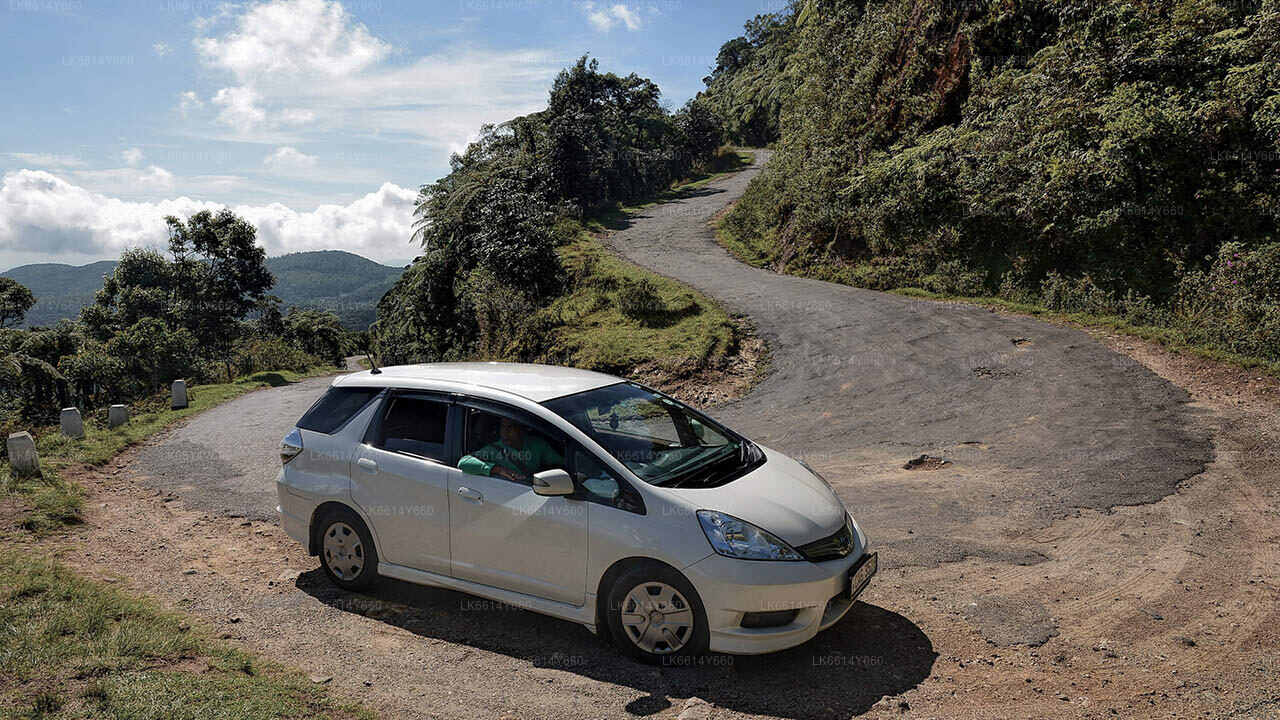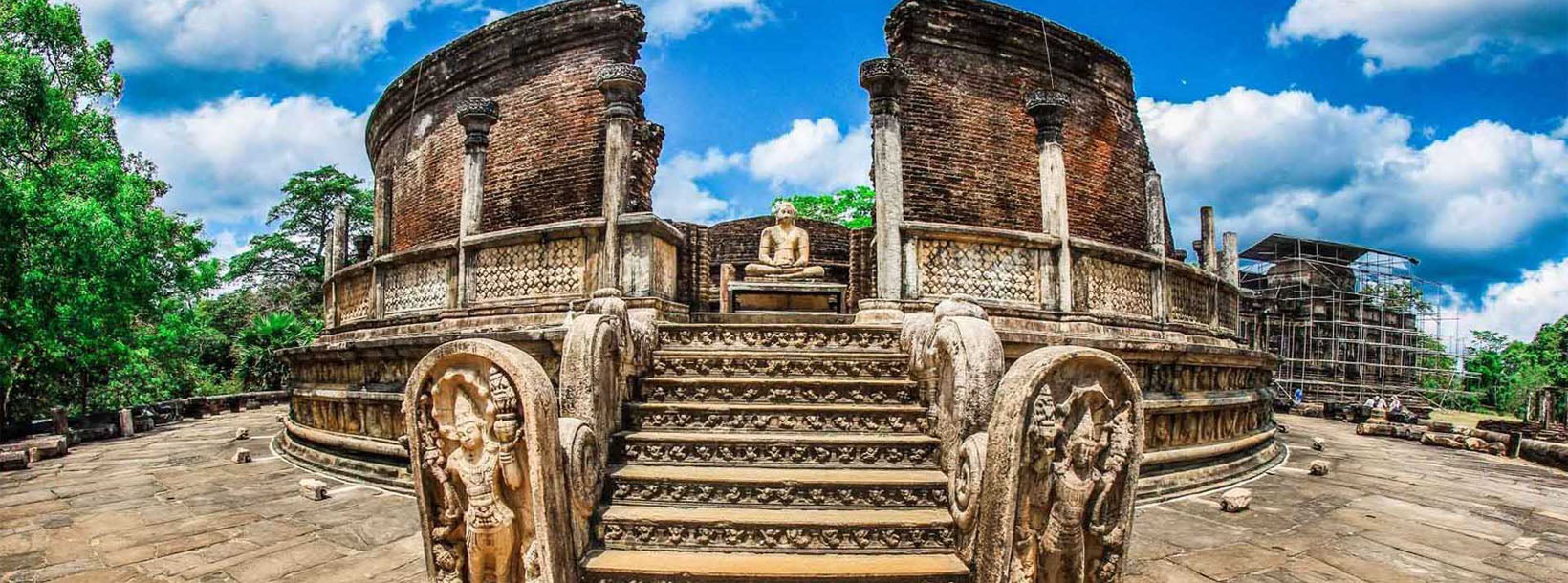
폴로나루와 시
스리랑카의 유네스코 세계문화유산인 폴로나루와는 스리랑카의 중세 수도(11세기~13세기)였습니다. 상징적인 갈 비하라(Gal Vihara) 석상을 비롯한 잘 보존된 유적지로 유명한 폴로나루와는 고대 싱할라 문명의 위엄을 보여주는 인상적인 건축물들을 자랑합니다.
Dimbulagala Raja Maha Vihara
About 12 miles to the east of the ancient kingdom Polonnaruwa on the east side of the Mahaweli is situated at the beautiful hilly range – Dimbulagala. In our ancient Pali texts this range is referred to as Udumbara – giri. ‘Udumbara’ is a name for wood apples, and ‘giri’ means hills/mountain. Dimbulagala was also known as ‘Dola Pabbatha’.
This area was once known as a kingdom of the Vakshas, then the kingdom of a prince clever in war, then a sacred area, and a Maha Viharaya – an abode of so many sacred beings. With the fall of the Polonnaruwa Kingdom, this was covered by thick forests devoid of its settlers. But it’s up again as an acclaimed abode of many of our monks and trainee monks, who’d be our future preachers of the Buddha’s doctrine – or His Buddha’s disciples.
Going back many centuries it is said that Prince Pandukabahaya, son of Unmadachitra and Deegagamini, lived in the stone cave here with Swarnapali and was accorded much hospitality by the two demon Senadhipathies Chitra Raja and Kala Vela, in human form. Then after some time, in the same stone cave of Dimbulagala, Princess Swarnapali gave birth to a son. He was named Mutasiva, after her father’s name. It’s also mentioned that another Prince was born and named Ganatissa.
Prince Pandukabhaya before he ascended the throne and made Anuradhapura his abode had lived here for many years. After him Mutasiva, his son by Swarnapali became king. It is said that Arahat Mahinda arrived in the Island during his reign in BC 247. Mutasiva was followed by his son the famous King Devanampiyatissa. From all this it becomes clear how important Dimbulagala is to us in tracing the lives of our ancient kings and their survival even under difficult circumstances.
King Dewanampiyatissa, the first properly acclaimed king of Anuradhapura our first kingdom was responsible for the erection of many Viharas. One of the first such Viharas was Dimbulagala. It is also historically important in that from Arahat Mahinda’s time up to the tenure of the last Arahat, Maliyadeva’s time many great Arahats dwelt in Dimbulagala. This is mentioned in the great literary work ‘Saddharmalankaraya. Then there followed unstable and disturbed political periods, with threat to general adminstration and security as well.
Thus we see history repeating itself beginning from the first century into the 20th century. The ascendancy of Vijayabahu I in the 2nd century 1057 BC, saw the revival and reconstruction of Buddhist palaces of worship, when the king himself went through his Coronation/Crowning with the blessings of the Sangha, vowing to safeguard Buddhism. Vijayabahu I restored Dimbulagala Viharaya which had suffered destruction in the hands of the invaders and enemies.
Dimbulagala is also noted for having being made the abode of Kuththagaththatissa, an Arahat who attended the writing down of the scripture at Aluvihare Matale along with five hundred Bhikkus. Hearing this King Valagamba patronised Dimbulagala, by maintaining the caves, erecting flower ponds, fruit gardens and Viharas for the monks and offered to the Bhikkus land, fields and villages.
Queen of Vijayabahu I, Sundara Devi, though an Indian had committed much service by pioneering many industries based in Dimbulagala. Many meditation kuti/caves were built around the Oushada Pokuna or herbs pond. Links had also been established with Anoratha, the King of Burma at the time. Many books on Dhamma were taken to Burma and many more on Tripitakya were demanded from the King of Sri Lanka.
Buddhism suffered a set back again due to lack of Royal patronage immediately after Vijayabahu I. It was at a time when the Sangha itself were disunited that Parakramabahu I ascended the throne and because of services rendered came to be known as Parakramabahu the great. There had been a great deterioration in the Bhikkhu Vinaya as well, the only remedying factor being the existence of Viharadhipathi of Dimbulagala.
The King summoned a Vinaya Sangayana to restore discipline among the Sangha. For this purpose the Viharadhipathi established a Sangha Sabha. In the time of King Parakumbha, a Sangha Sabha was appointed concentrating on the Vinaya/Discipline of the Sangha. Dimbulagala reached an international status as a centre of knowledge with Maha Kassapa as the Chief Priest. It also became famous as a centre for Buddhism and an advisory centre for kings. In Namal Pokuna area lived many monks who had come from Burma etc. who studied here.
The area around Dimbulagala was offered to the Viharya by Parakramabahu I and Matara Kithalagama Most Rev. Siri Seelalankara who rebuilt Dimbulagala which had suffered enemy attacks and turned into a deserted wilderness.
Until his death a few years ago, the Sangha Nayaka treasured Dimbulagala and was a protector of the Viharaya.
The late Maha Nayaka is also remembered for establishing village settlements in the area through granting land, housing facilities and guidance in the last two decades. He encouraged and helped the settlements in Welioya, Janakapura, Welikanda and Kadawatha, Maduwa, but his plans of settlements in Kantale and Vavuniya suffered disappointment. In some of his national ventures he was patronised by all heads of state and the late Gamini Dissanayake had provided him strength, especially in the settlements in Mahaweli Development area.
Dimbulagala which had once been a great centre of learning – it had had religious connections with Burma and Thailand. It had conducted religious teachings in eighteen languages. It had given advice and guided the great kings like King Viajayabahu I and Parakramabahu I. The Royal Queens like Sundara Devi had patronised the erection of Dimbulagala.
Reat clergy residing in Dimbulagala.There’s the belief that a museum in Thailand has in its possession a book engraved in gold on the the Tripitakaya, written by a Thai Prince, that there is a connection between the cessation of hostilities in Thailand throu
폴로나루와 지구 소개
폴로나루와는 스리랑카 북중부 주에서 두 번째로 큰 도시입니다. 고대 도시 폴로나루와는 유네스코 세계문화유산으로 지정되었습니다. 폴로나루와는 정복과 투쟁의 역사를 간직하고 있으며, 문화 삼각지대의 세 번째 요소로 손꼽힙니다. 캔디에서 북동쪽으로 약 140km 떨어진 폴로나루와는 역사와 문화 애호가들에게 수많은 중요한 명소를 품고 있어 끝없는 즐거움을 선사합니다.
오늘날 남아 있는 유적의 상당 부분은 파라크라마 바후 1세의 공로로 여겨집니다. 그는 공원, 건축물, 관개 시설 등 도시 계획에 왕실 자원을 대거 투자했습니다. 그의 통치 기간은 선견지명이 뛰어난 통치자 아래 왕국이 번영하고 번영했던 황금기로 여겨집니다. 파라크라마 사무드라는 거대한 탱크로, 후원자의 이름을 따서 명명되었습니다. 왕의 인기 있는 왕궁, 아름답게 조각된 석조 코끼리로 둘러싸인 알현실, 그리고 목욕탕은 당시의 뛰어난 공학 기술을 보여줍니다.
북중부 지방 소개
스리랑카에서 가장 큰 주(州)인 북중부주는 전체 국토 면적의 16%를 차지합니다. 북중부주는 폴로나루와와 아누라다푸레라는 두 개의 지구로 구성되어 있습니다. 아누라다푸라는 스리랑카에서 가장 큰 지구로, 면적은 7,128km²입니다.
북중부 지방은 투자자들이 사업을 시작할 수 있는 풍부한 잠재력을 가지고 있으며, 특히 농업, 농업 기반 산업, 축산 분야가 그렇습니다. 북중부 지방 주민의 65% 이상이 기초 농업 및 농업 기반 산업에 의존하고 있습니다. 3,000개가 넘는 중대형 탱크가 있어 북중부 지방은 "웨우 벤디 라제(Wew Bendi Rajje)"라고도 불립니다. 스리 마하 보디야(Sri Maha Bodiya), 루완웰리 세야(Ruwanweli Seya), 투파라마 다게바(Thuparama dageba), 아바야기리 사원(Abayagiri Monastry), 폴로나루와 란콧 웨헤라(Polonnaruwa Rankot wehera), 랑카틸라케(Lankathilake) 등이 있습니다.

